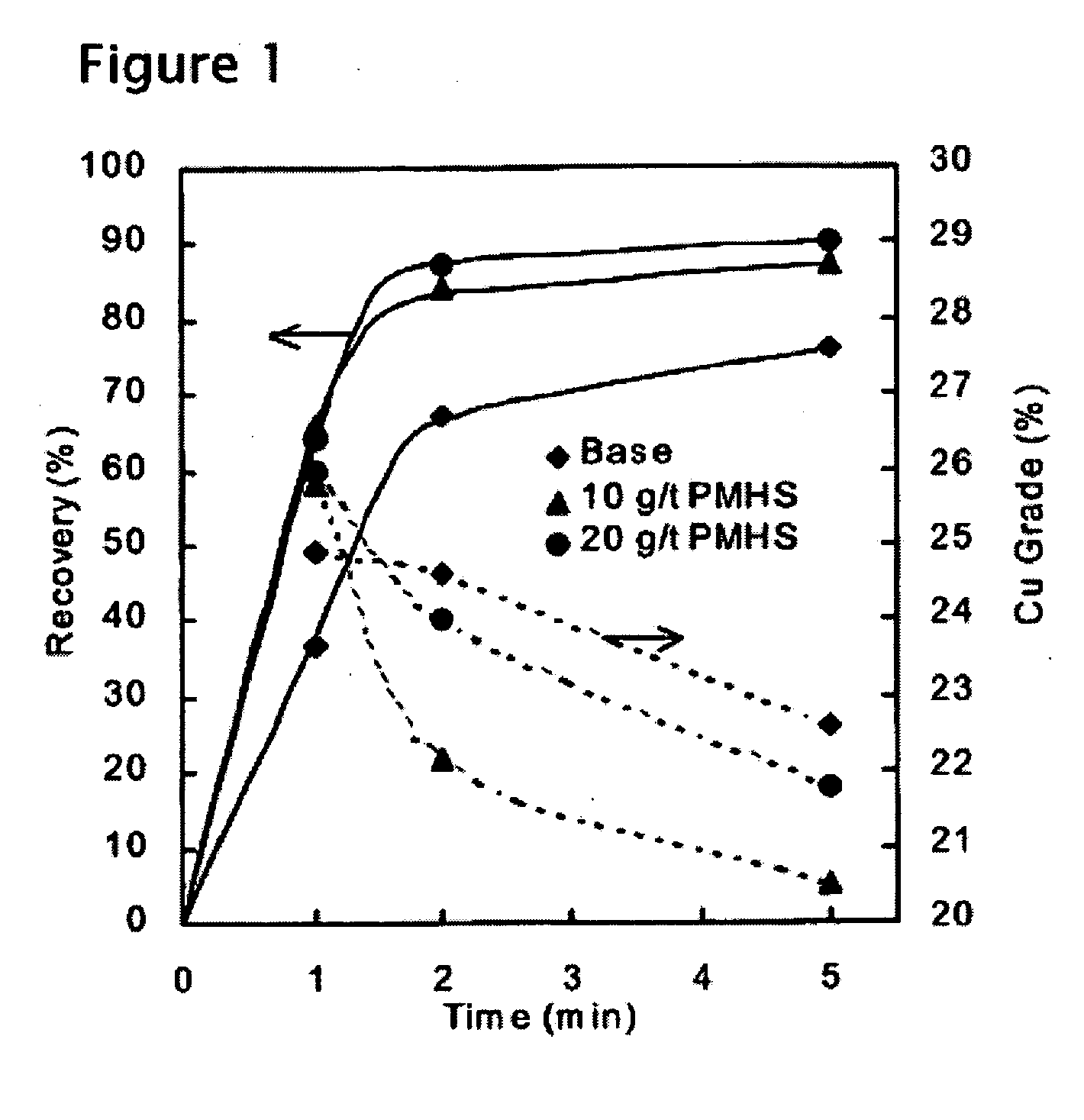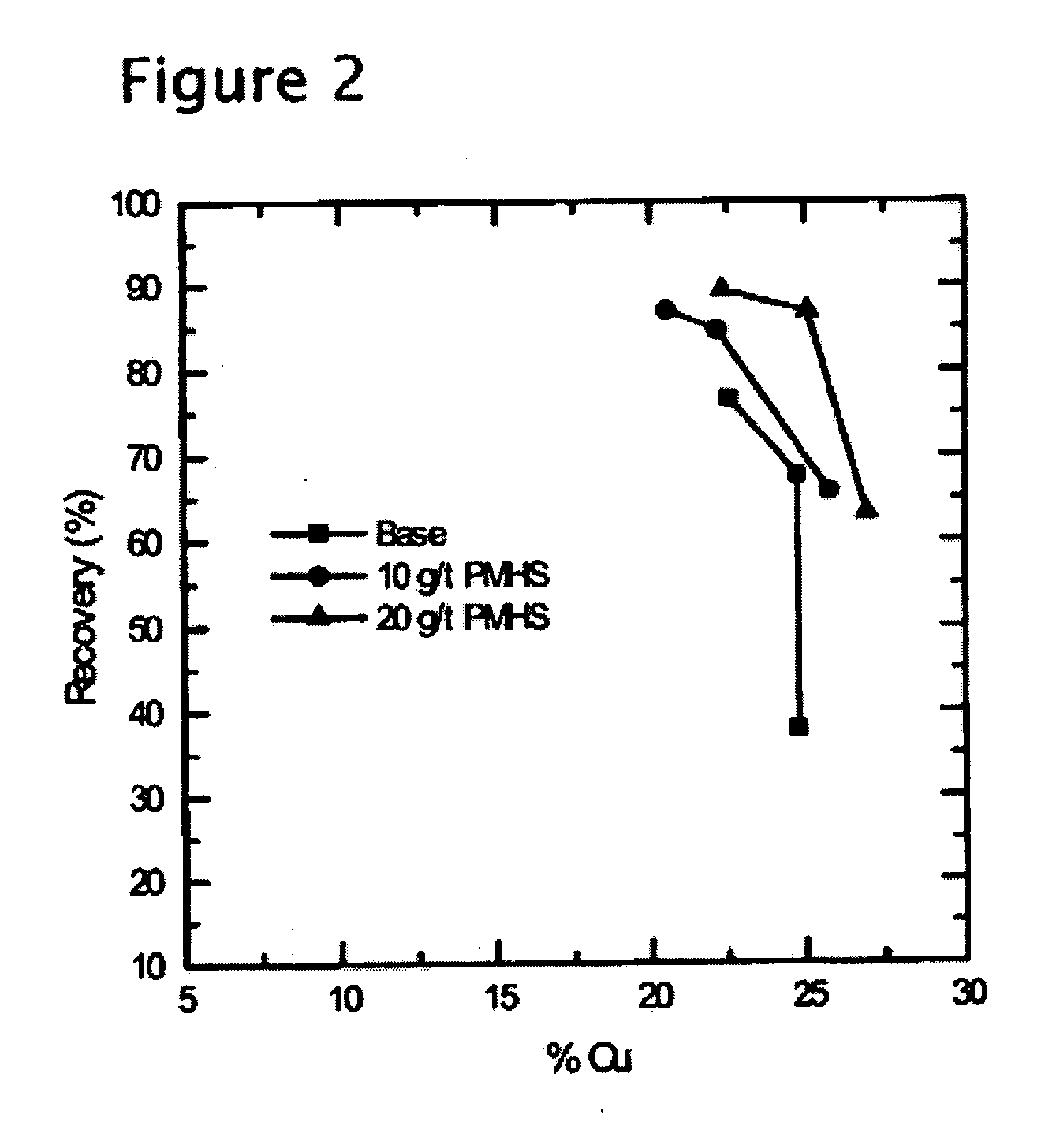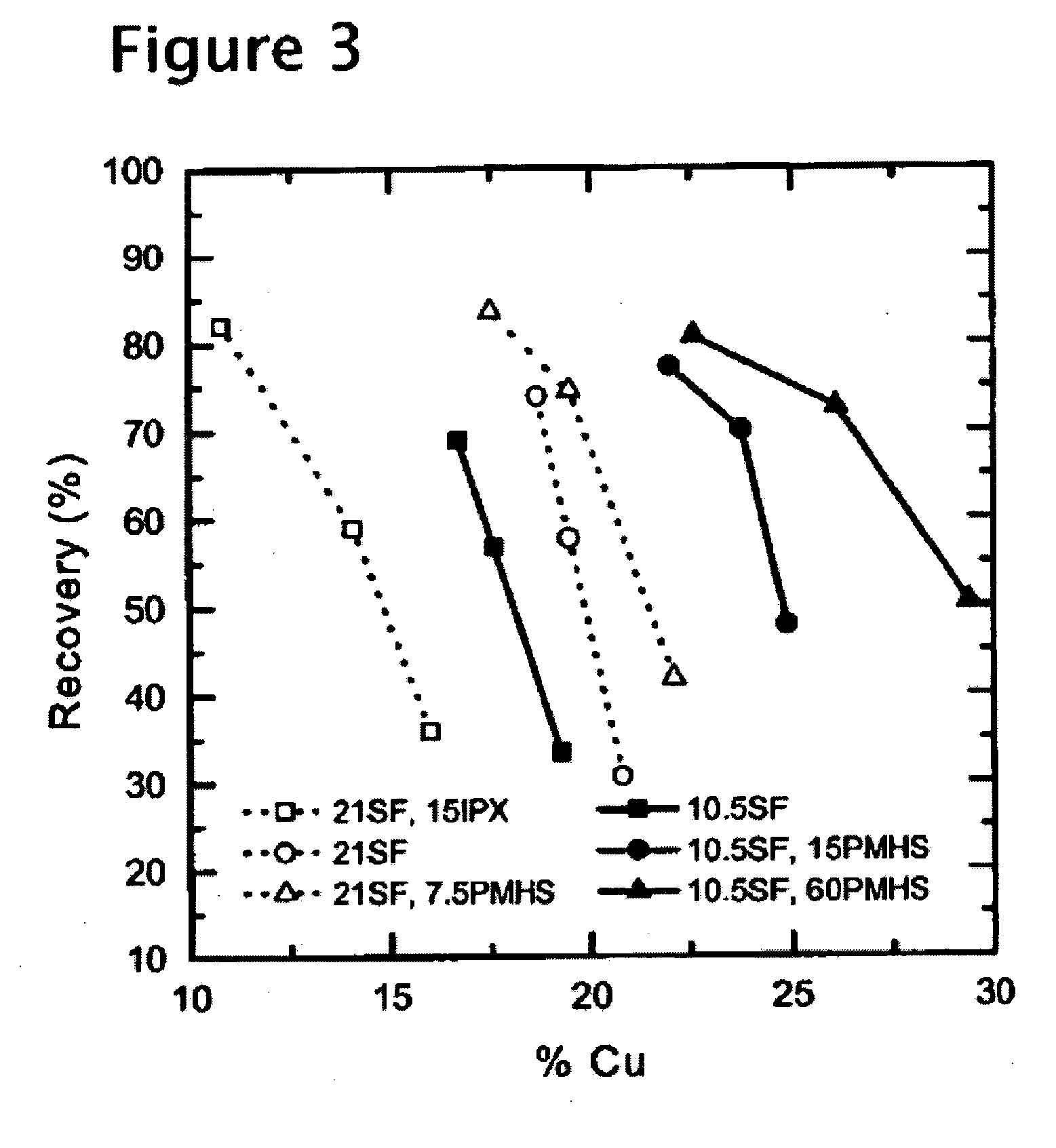Methods of increasing flotation rate
a technology of flotation rate and flotation chamber, which is applied in the direction of flotation, solid separation, etc., can solve the problems of hydrophobic monolayer formation and density that is not usually allowed, and achieve the effect of deteriorating efficiency
- Summary
- Abstract
- Description
- Claims
- Application Information
AI Technical Summary
Benefits of technology
Problems solved by technology
Method used
Image
Examples
example 1
[0042] A porphyry-type copper ore from Chuquicamata Mine, Chile, (assaying about 1% Cu), was subjected to a set of three flotation tests. In each test, approximately 1 kg of the ore sample was wet-ground in a laboratory ball mill at 66% solids. Lime and diesel oil (5 g / t) was added to the mill. In the control test, the mill discharge was transferred to a Denver laboratory flotation cell, and conditioned with 5 g / ton of a conventional thiol-type collector (Shellfloat 758) for 1 minutes at pH 10.5. Flotation test was conducted for 5 minutes with 20 g / t methylisobutyl carbinol (MIBC) as a frother. Froth products were collected for the first 1, 2, and 5 minutes of flotation time, and analyzed separately to obtain kinetic information.
[0043] The next two tests were conducted using polymethyl hydrosiloxane (PMHS) in addition to the thiol-type collector. This reagent is a water-soluble hydrophobic polymer, whose role was to enhance the hydrophobicity of the mineral to be floated (chalcopyr...
example 2
[0045] Another porphyry-type copper ore was tested using PMHS as a hydrophobicity-enhancing agent. The ore sample was from El Teniente Mine, Chile, and assayed 1.1% Cu. In each test, approximately 1 kg of the ore sample was wet-ground for 9 minutes with lime and diesel oil (15 g / t). The mill discharge was conditioned in a Denver laboratory flotation cell for 1 minute with Shellfloat 758 at pH 11. Flotation tests were conducted for 5 minutes using 20 g / t of MIBC as frother. The froth products were collected for the first 1, 2, and 5 minutes of flotation time, and analyzed separately to obtain kinetic information.
[0046] Two sets of tests were conducted with the El Teniente ore samples. In the first set, three flotation tests were conducted using 21 g / t Shellfloat 758. One test was conducted without using any hydrophobicity-enhancing reagent. In another, 15 g / t of sodium isopropyl xanthate (IPX) was used in addition to the Shellfloat (SF). In still another, 7.5 g / t of PMHS was used as...
example 3
[0048] Laboratory flotation tests were conducted on a copper ore sample from Aitik Concentrator, Boliden AB, Sweden. Representative samples were taken from a classifier overflow, and floated in a Denver laboratory flotation cell. In each test, approximately 1 kg sample was conditioned for 2 minutes with 3 g / t potassium amyl xanthate (KAX), and floated for 3 minutes. The tails from the rougher flotation was reconditioned for 3 minutes with 3.5 g / t of KAX, and floated for another 4 minutes. A total of 30 g / t MIBC was used during the rougher and scavenger flotation. The rougher and scavenger concentrates were combined and analyzed. During conditioning, the pH was adjusted to 10.8 by lime addition.
[0049] In another test, flotation test was conducted using an esterified lard oil as a hydrophobicity-enhancing agent. It was used in addition to all of the reagents used in the control tests. The novel hydrophobicity-enhancing reagent was added in the amount of 7.5 g / t to the slurry after th...
PUM
| Property | Measurement | Unit |
|---|---|---|
| contact angle | aaaaa | aaaaa |
| temperature | aaaaa | aaaaa |
| pH | aaaaa | aaaaa |
Abstract
Description
Claims
Application Information
 Login to View More
Login to View More - R&D
- Intellectual Property
- Life Sciences
- Materials
- Tech Scout
- Unparalleled Data Quality
- Higher Quality Content
- 60% Fewer Hallucinations
Browse by: Latest US Patents, China's latest patents, Technical Efficacy Thesaurus, Application Domain, Technology Topic, Popular Technical Reports.
© 2025 PatSnap. All rights reserved.Legal|Privacy policy|Modern Slavery Act Transparency Statement|Sitemap|About US| Contact US: help@patsnap.com



